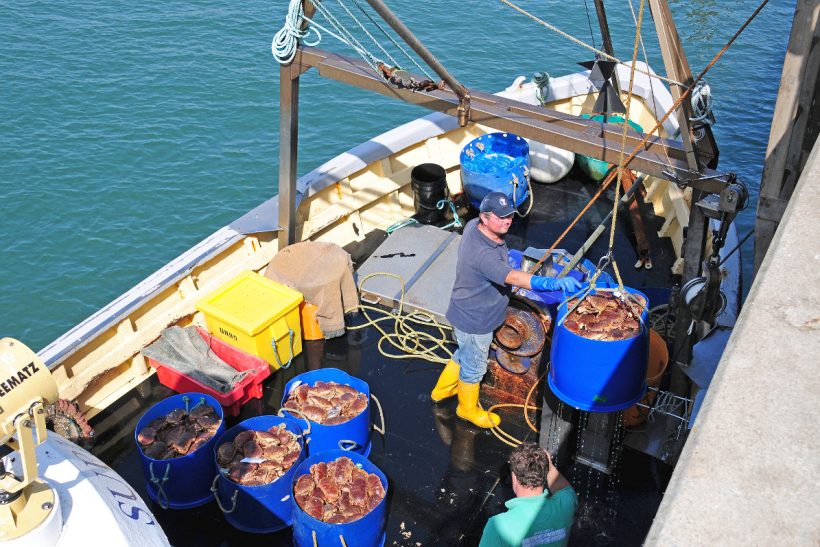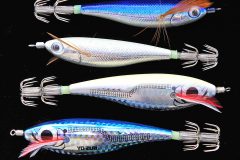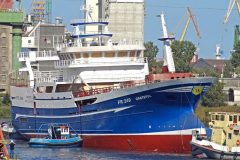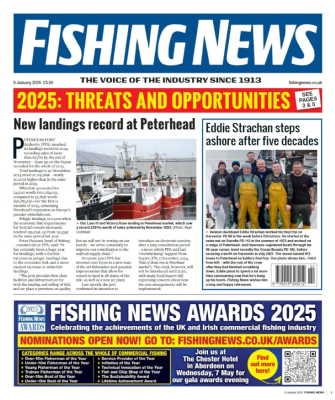The two South Devon ports of Dartmouth and Salcombe host the region’s leading shellfish fleet, landing predominantly brown crab, much of which is caught on the rich grounds within six miles of the coast, reports Martin Johns
Above: Alan Steer of Superb-Us lands his catch to a waiting lorry at Kingswear.
Dartmouth
Crabbers fishing from Dartmouth are having a mixed year, with good early-season fishing later tailing off for the inshore boats to give what they describe as a steady year.
At the top end of Start Bay, inshore crabbers such as Nil Desperandum DH 390, skippered by Jody Channer, have had a lot of soft and undersized brown hen crab in their pots, often just under the legal landing size.
Jody Channer is very hopeful that this bodes well for future years when the crab will have grown to a retainable size.
The minimum landing size was raised some 18 months ago to 150mm for hen crab (from 140mm) and 160mm for cock crab (from 150mm).
While this minimum landing size increase will naturally see a slight short-term decrease in catch rates, it is almost universally welcomed by the fleet as it gives the stock at least one extra breeding season.
The amount of lobster caught in the inshore pots has been steady, although much of it is berried or V-notched, and the landed amount of lobster is down slightly on last year. As with the crab, catches of lobster started well, before falling away as the season progressed.
Another encouraging sign for the future is the number of tiny lobster and crayfish seen on the pots at the top end of Start Bay.

Jody Channer, Skipper of Nil Desperandum DH 390, working on his pots in Dartmouth.
Jody Channer said: “We are just about making a day’s wages, around 400kg a day, and we’re hopeful that things will pick up again soon to give us a good October and November.”
Some of the bigger crabbers, fishing at the other end of Start Bay and off Start Point report better fishing, particularly in the early season.
Those on the periphery of the IPA area, six miles out, have found reasonable fishing throughout the season. Alan Steer, skipper of Superb-Us DH 99, said his gear on the six-mile limit at the edge of Start Bay has produced steady catches of around one tonne per day, recently dropping to around 700-800kg, while pots shot closer inshore have been less productive.
Overall, Alan described his season as, “steady but nothing exciting” adding that he is, “hoping for a better October and November before the water temperature begins to drop off.”
Skipper Simon Mitchelmore of Tarka DH 181, a recent addition to the Dartmouth fleet, fishing six miles south of Start Point said he had ‘no complaints’ about his catch rates of between one and two tonnes of brown crab per day.
Other fleet changes in Dartmouth have been minimal.

Britannia of Beesands coming in to land at Kingswear.
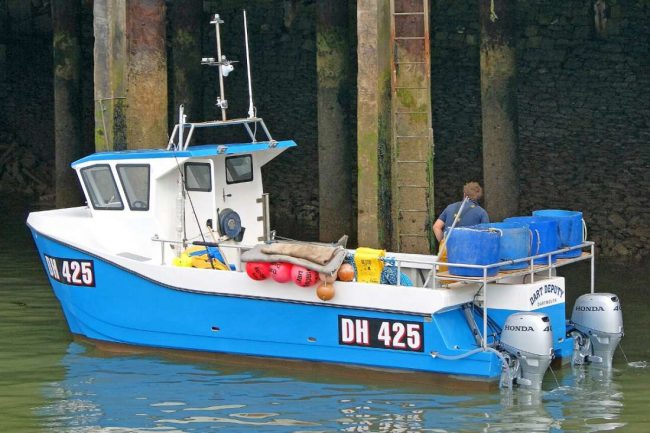
Dart Deputy, a Twin Seas 6.9m catamaran, is a new addition to the Dartmouth fleet.
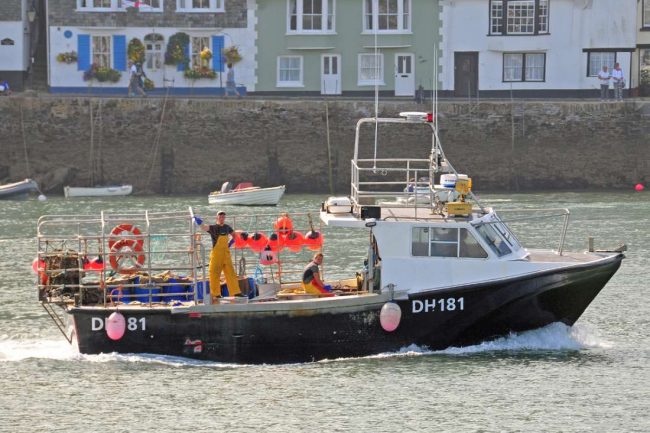
The Offshore 125 Tarka DH 181 has recently joined the Dartmouth fleet.
Lee Marells has started fishing in his new 6.9m Twin Seas catamaran potter, Dart Deputy DH 425, while Mark Durrans’ Hannah Beth DH 23, primarily a whelk potter, has recently been sold to Scotland and replaced by a Cygnus GM 40 vivier-crabber, Realt An Oileain G 733, from Galway in Ireland. Another whelker/crabber, Newbrook DH 149, is currently up for sale.
Salcombe
Move west of Start Point to Salcombe and it’s been a similar story.
Inshore crabbers had a good start in May and June, but this has now tailed for all but the offshore crabbers.
Phil Cardew, skipper of Hustler SE 66, fishing up to three miles offshore, said: “We’re getting lots of brown crab in the pots, but much of it is soft still. We are hoping it picks up again before the weather breaks.”
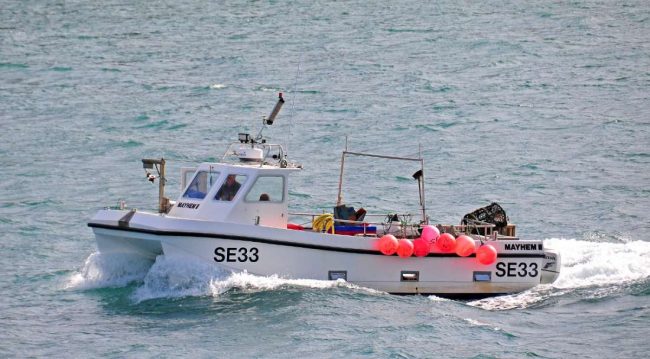
Mayhem II pushing against the tide coming back into Salcombe.
Brown crab catch rates inshore are currently averaging 0.5kg per pot, while this improves somewhat to 1kg per pot further offshore.
The poor crab catches for the inshore boats is currently being countered slightly by the fact that there is still a reasonable amount of lobster around, with good prices being paid.
Salcombe boats are not specifically targeting spider crab, as some have done in previous years, as demand for the species is very low and the price paid doesn’t even cover the cost of the bait on occasions.
Crab prices have remained steady throughout the season (£1.30 to £1.60 per kg), and the general consensus is that a reasonable living can still be made if the weather allows the boats to fish most days.
Some of the bigger Salcombe crabbers have had things slightly better fishing around the six-mile limit, although catch rates are still lower than is normal for the time of year, with Tenacious DH 95 struggling to catch three-quarters of a tonne a day.
Jon Dornom, skipper of Tenacious, said: “May and June were very good months, but it’s gone quieter now with a lot of soft crab in the pots. The only saving grace for us is that we having been getting good prices for what crab we are landing.”
Crab processors are reporting unprecedented customer demand for their products, hence the current high prices being paid.
A handful of boats are splitting their time between inshore and working in the northern-most section of the mid-channel potting areas (known as the blocks) but say catch rates there aren’t much to write home about.
The biggest Salcombe potters working in the most seaward mid-channel blocks, around 45 miles south of Salcombe, have seen good catches, with Pen Glas SE 34, in particular, having a very good season.
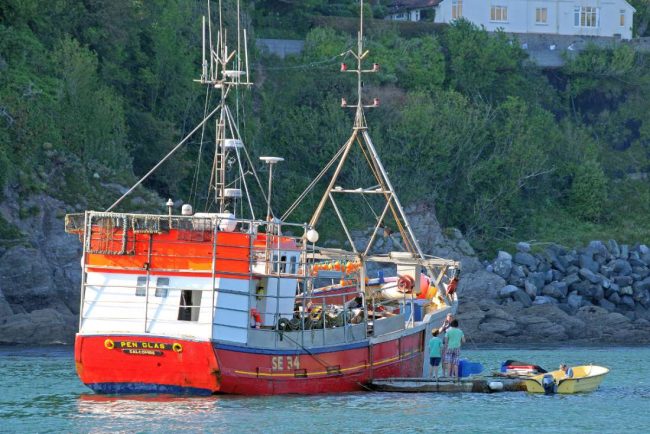
Pen Glas unloading her catch into a floating storage box in the estuary.
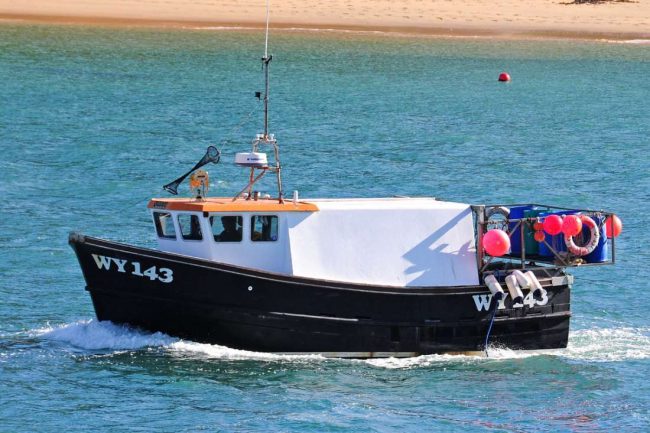
Steve Inch’s Quest is a recent addition to the Salcombe fleet.
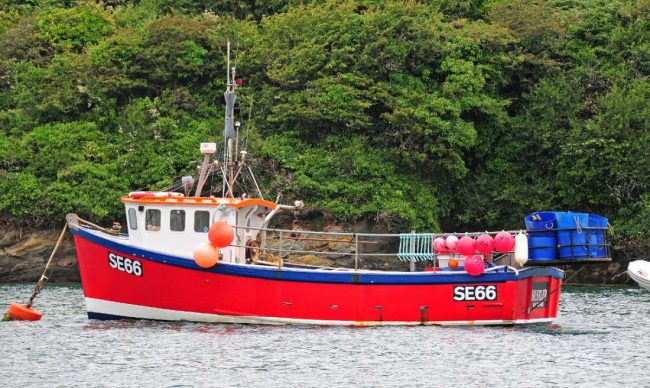
Phil Cardew’s Hustler swings on her mooring in Salcombe Estuary.
Fleet numbers have remained static, although a couple of skippers have upgraded their potting boats. Dave Morgan has replaced his Cyclone 26, Artful Dodger SE 156 with a Cygnus GM 32, Southern Star FY 125, bought from nearby Plymouth, and Steve Inch has replaced his Cygnus GM 32, Golden Opportunity SE 67 with a bigger Cygnus GM 33, Quest WY 143 from Whitby.
With the peak of the brown crab season still two months away, all Salcombe skippers are hoping the lull in catches is only a temporary one.
Read more from Fishing News here.


The two South Devon ports of Dartmouth and Salcombe host the region’s leading shellfish fleet, landing predominantly brown crab, much of which is caught on the rich grounds within six miles of the coast, reports Martin Johns Above: Alan Steer of Superb-Us lands his catch to a waiting lorry at Kingswear.
Dartmouth
Crabbers fishing from Dartmouth are having a mixed year, with good early-season fishing later tailing off for the inshore boats to give what they describe as a steady year. At the top end of Start Bay, inshore crabbers such as Nil Desperandum DH 390, skippered by Jody Channer, have had a lot of soft and undersized brown hen crab in their pots, often just under the legal landing size. Jody Channer is very hopeful that this bodes well for future years when the crab will have grown to a retainable size. The minimum landing size was raised some 18 months ago to 150mm for hen crab (from 140mm) and 160mm for cock crab (from 150mm). While this minimum landing size increase will naturally see a slight short-term decrease in catch rates, it is almost universally welcomed by the fleet as it gives the stock at least one extra breeding season. The amount of lobster caught in the inshore pots has been steady, although much of it is berried or V-notched, and the landed amount of lobster is down slightly on last year. As with the crab, catches of lobster started well, before falling away as the season progressed. Another encouraging sign for the future is the number of tiny lobster and crayfish seen on the pots at the top end of Start Bay.

Jody Channer, Skipper of Nil Desperandum DH 390, working on his pots in Dartmouth.
Jody Channer said: “We are just about making a day’s wages, around 400kg a day, and we’re hopeful that things will pick up again soon to give us a good October and November.” Some of the bigger crabbers, fishing at the other end of Start Bay and off Start Point report better fishing, particularly in the early season. Those on the periphery of the IPA area, six miles out, have found reasonable fishing throughout the season. Alan Steer, skipper of Superb-Us DH 99, said his gear on the six-mile limit at the edge of Start Bay has produced steady catches of around one tonne per day, recently dropping to around 700-800kg, while pots shot closer inshore have been less productive. Overall, Alan described his season as, “steady but nothing exciting” adding that he is, “hoping for a better October and November before the water temperature begins to drop off.” Skipper Simon Mitchelmore of Tarka DH 181, a recent addition to the Dartmouth fleet, fishing six miles south of Start Point said he had ‘no complaints’ about his catch rates of between one and two tonnes of brown crab per day. Other fleet changes in Dartmouth have been minimal.

Britannia of Beesands coming in to land at Kingswear.

Dart Deputy, a Twin Seas 6.9m catamaran, is a new addition to the Dartmouth fleet.

The Offshore 125 Tarka DH 181 has recently joined the Dartmouth fleet.
Lee Marells has started fishing in his new 6.9m Twin Seas catamaran potter, Dart Deputy DH 425, while Mark Durrans’ Hannah Beth DH 23, primarily a whelk potter, has recently been sold to Scotland and replaced by a Cygnus GM 40 vivier-crabber, Realt An Oileain G 733, from Galway in Ireland. Another whelker/crabber, Newbrook DH 149, is currently up for sale.
Salcombe
Move west of Start Point to Salcombe and it’s been a similar story. Inshore crabbers had a good start in May and June, but this has now tailed for all but the offshore crabbers. Phil Cardew, skipper of Hustler SE 66, fishing up to three miles offshore, said: “We’re getting lots of brown crab in the pots, but much of it is soft still. We are hoping it picks up again before the weather breaks.”

Mayhem II pushing against the tide coming back into Salcombe.
Brown crab catch rates inshore are currently averaging 0.5kg per pot, while this improves somewhat to 1kg per pot further offshore. The poor crab catches for the inshore boats is currently being countered slightly by the fact that there is still a reasonable amount of lobster around, with good prices being paid. Salcombe boats are not specifically targeting spider crab, as some have done in previous years, as demand for the species is very low and the price paid doesn’t even cover the cost of the bait on occasions. Crab prices have remained steady throughout the season (£1.30 to £1.60 per kg), and the general consensus is that a reasonable living can still be made if the weather allows the boats to fish most days. Some of the bigger Salcombe crabbers have had things slightly better fishing around the six-mile limit, although catch rates are still lower than is normal for the time of year, with Tenacious DH 95 struggling to catch three-quarters of a tonne a day. Jon Dornom, skipper of Tenacious, said: “May and June were very good months, but it’s gone quieter now with a lot of soft crab in the pots. The only saving grace for us is that we having been getting good prices for what crab we are landing.” Crab processors are reporting unprecedented customer demand for their products, hence the current high prices being paid. A handful of boats are splitting their time between inshore and working in the northern-most section of the mid-channel potting areas (known as the blocks) but say catch rates there aren’t much to write home about. The biggest Salcombe potters working in the most seaward mid-channel blocks, around 45 miles south of Salcombe, have seen good catches, with Pen Glas SE 34, in particular, having a very good season.

Pen Glas unloading her catch into a floating storage box in the estuary.

Steve Inch’s Quest is a recent addition to the Salcombe fleet.

Phil Cardew’s Hustler swings on her mooring in Salcombe Estuary.
Fleet numbers have remained static, although a couple of skippers have upgraded their potting boats. Dave Morgan has replaced his Cyclone 26, Artful Dodger SE 156 with a Cygnus GM 32, Southern Star FY 125, bought from nearby Plymouth, and Steve Inch has replaced his Cygnus GM 32, Golden Opportunity SE 67 with a bigger Cygnus GM 33, Quest WY 143 from Whitby. With the peak of the brown crab season still two months away, all Salcombe skippers are hoping the lull in catches is only a temporary one. Read more from Fishing News here.

